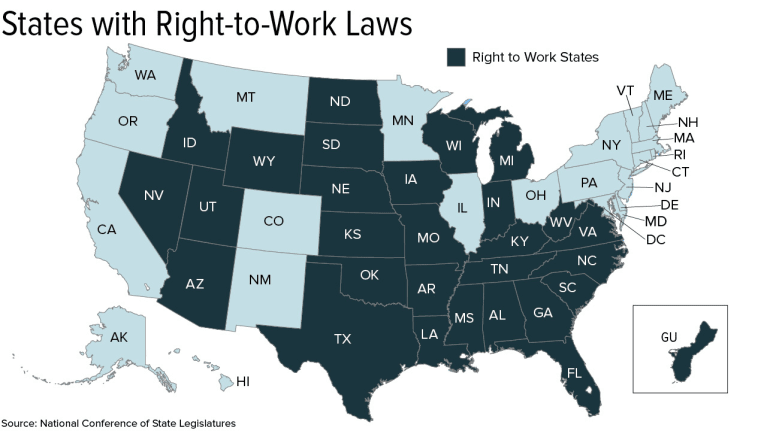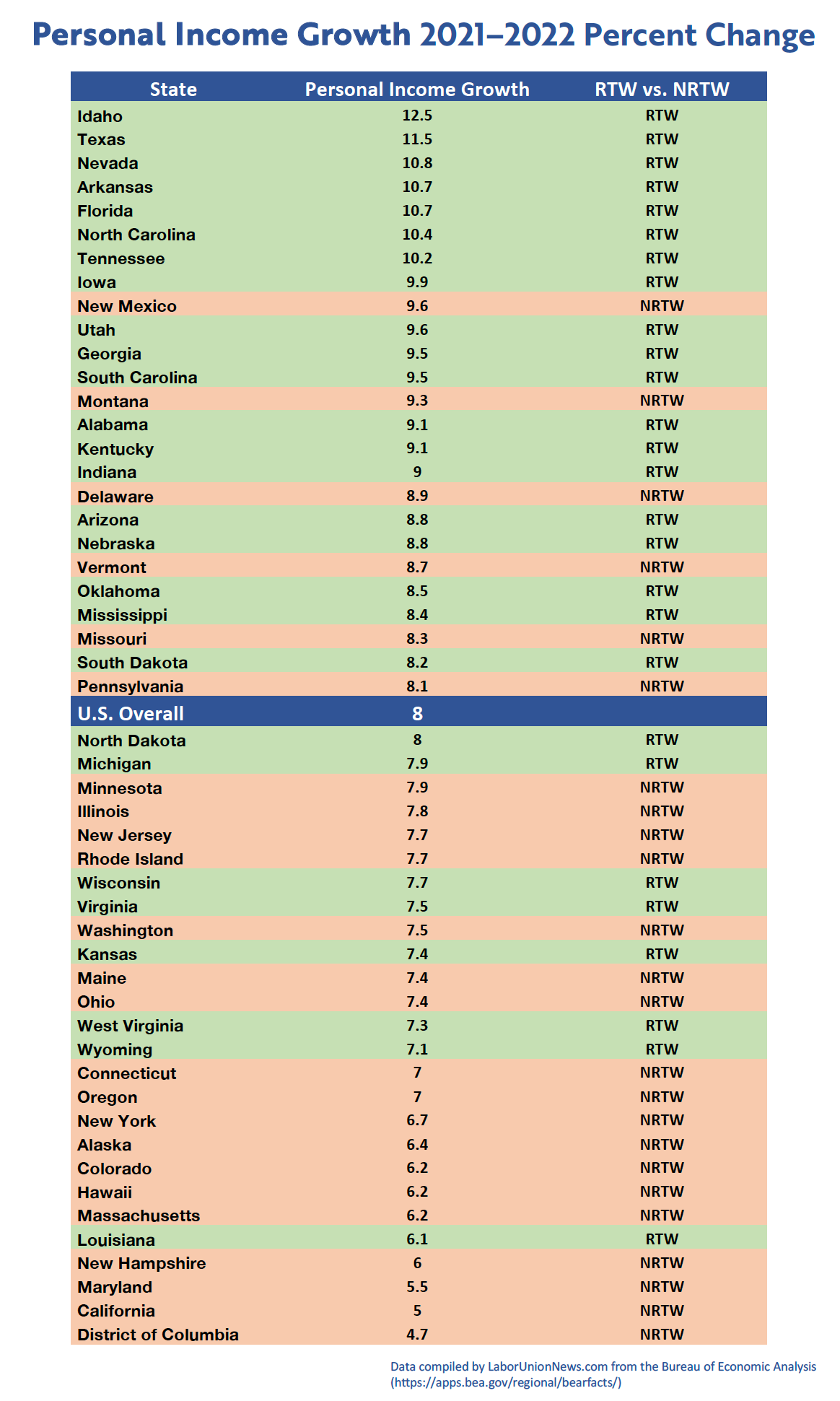On March 31st, the Bureau of Economic Analysis (BEA) released 2022 report on state personal income growth.
Although a Wall Street Journal analysis noted the BEA’s columns “have documented the economic disparities between states such as New York and California that imposed severe lockdowns for longer and those that reopened sooner such as Florida and Texas,” the expected stronger rebound in 2022 “did not happen.”
Instead, “earnings growth in nearly all lockdown states fell below the national average (8%),” the Wall Street Journal notes. “One reason is population migration during the pandemic: Fewer workers equals lower earnings.”
Despite rising Person Income Growth across all states, averaging eight percent (8%) nationally1, the BEA data also shows significant overall differences between states with Right-to-Work laws and states without Right-to-Work laws (as highlighted by color below).
Given that there are a myriad of other factors, such as pandemic-related migration, tax policy differences, as well as business closures during the pandemic, the data is consistent with prior research, including:
A 2018 report published by National Economic Research Associates which stated, “Personal income in RTW states rose over ten percentage points more than in non-RTW states between 2001 and 2016, 39 percent versus 26 percent.”
However, the data is inconsistent with other data such as one NBER study where researchers found that “right-to-work laws are associated with a drop of about 4 percentage points in unionization rates five years after adoption, as well as a wage drop of about 1 percent.”
The BEA defines net earnings as wages, wage supplements and proprietors’ income minus government social insurance deductions. It notably excludes transfer receipts like food stamps and Medicaid, according to the Wall Street Journal.





